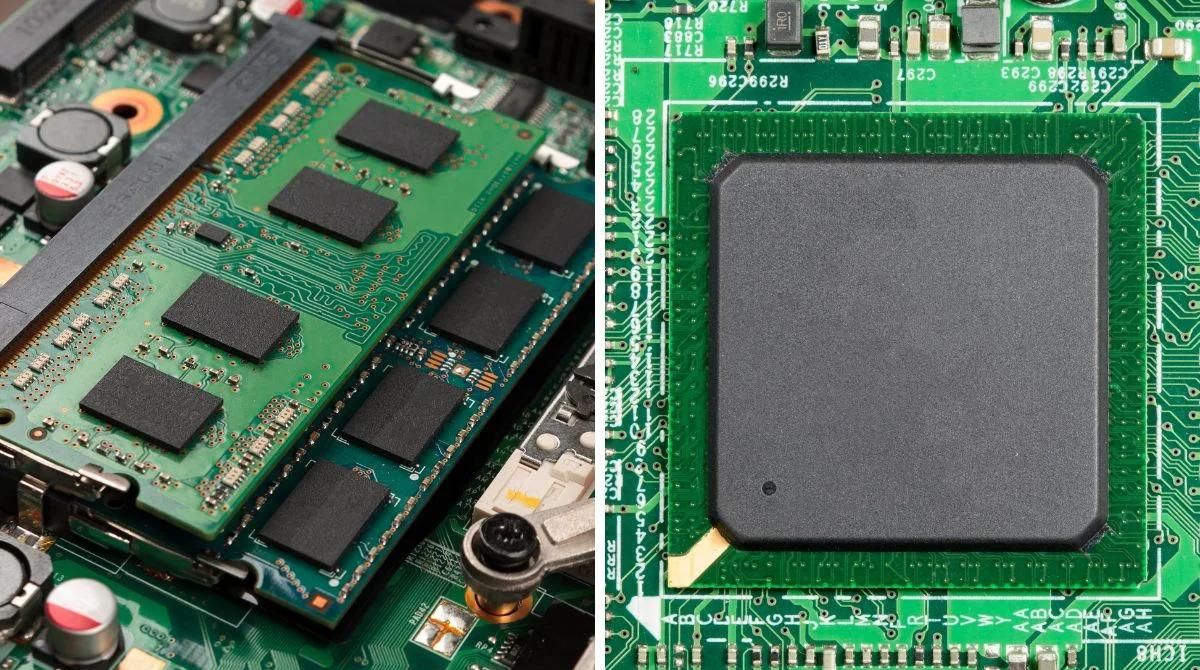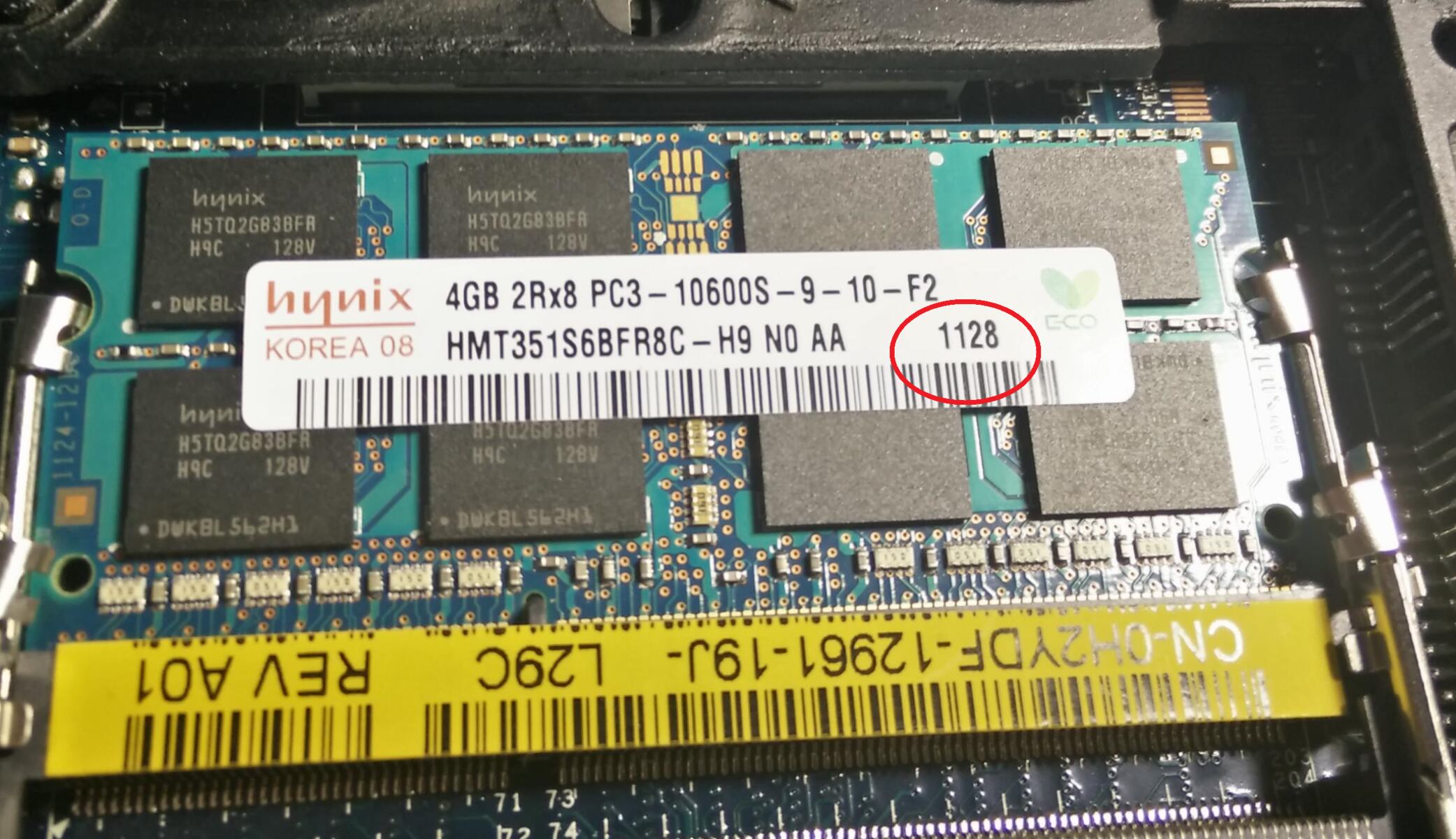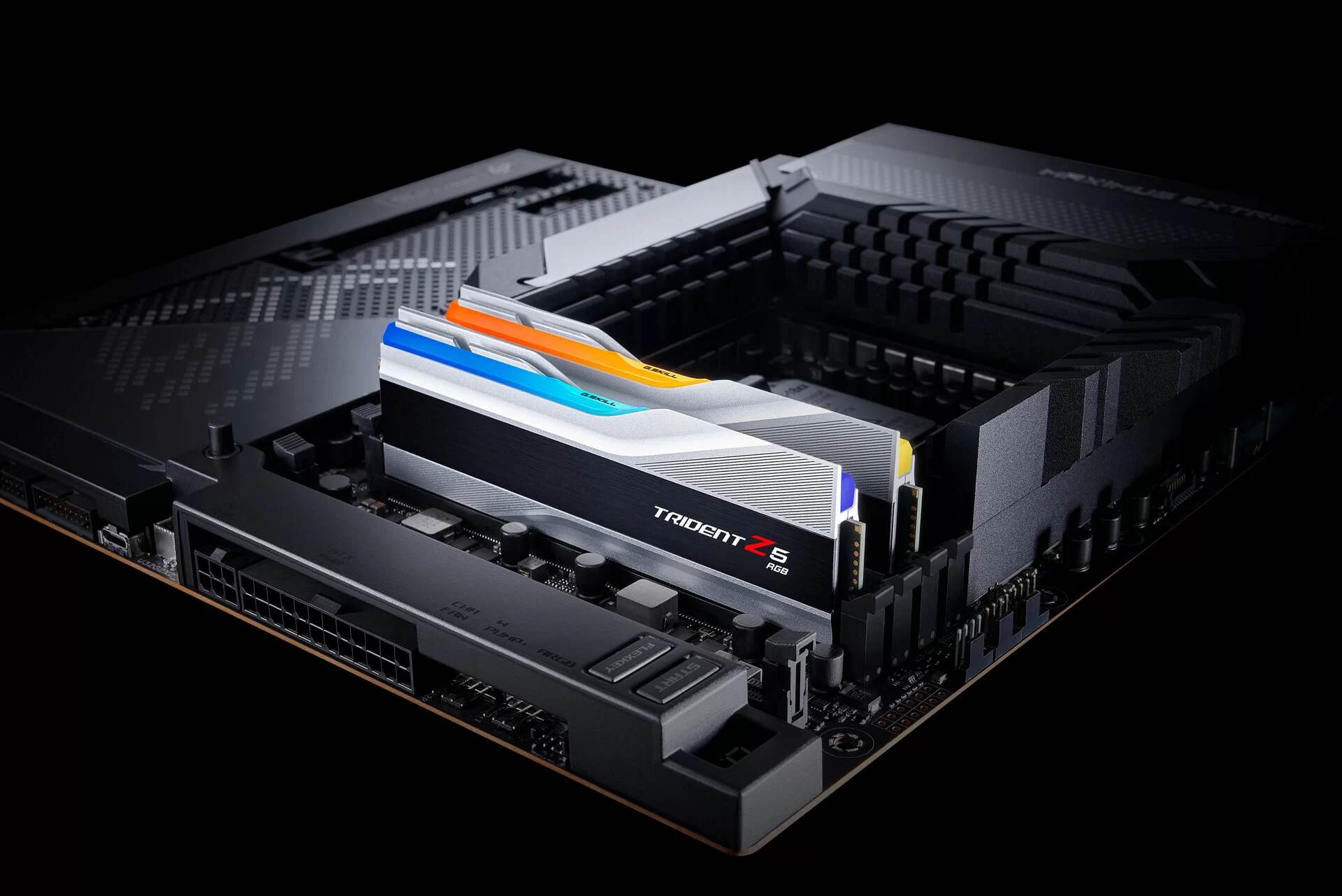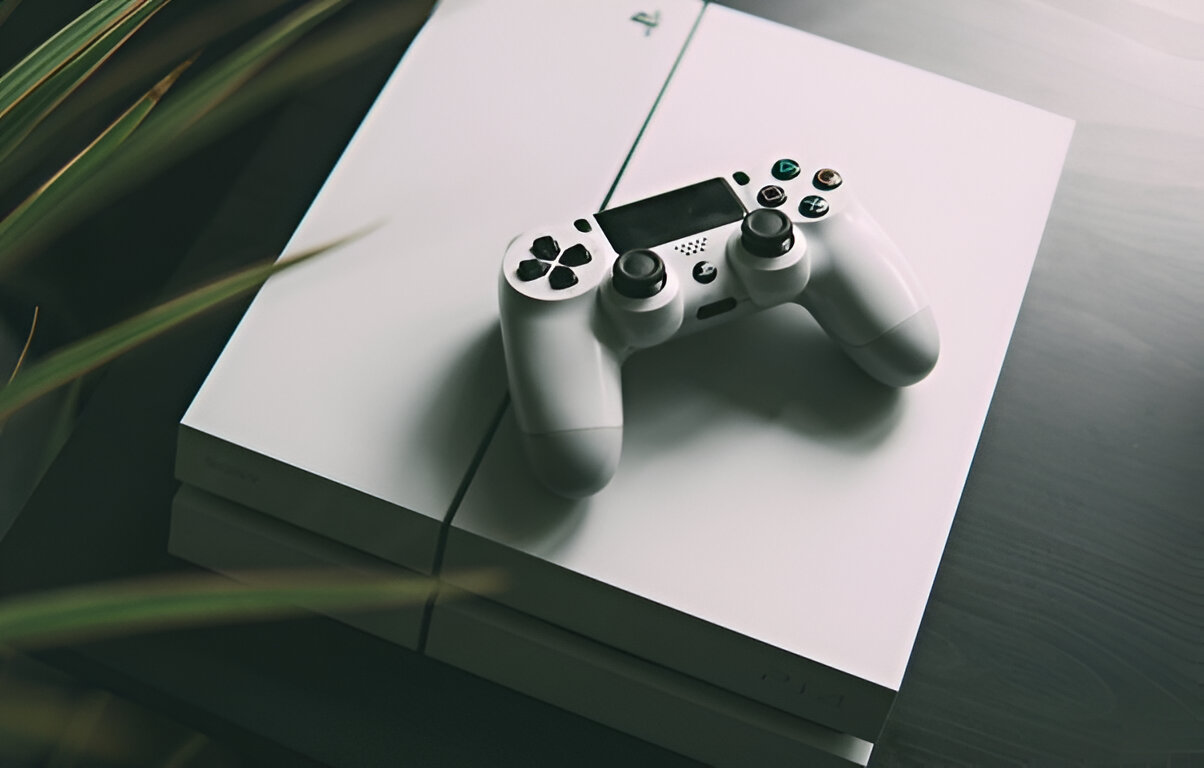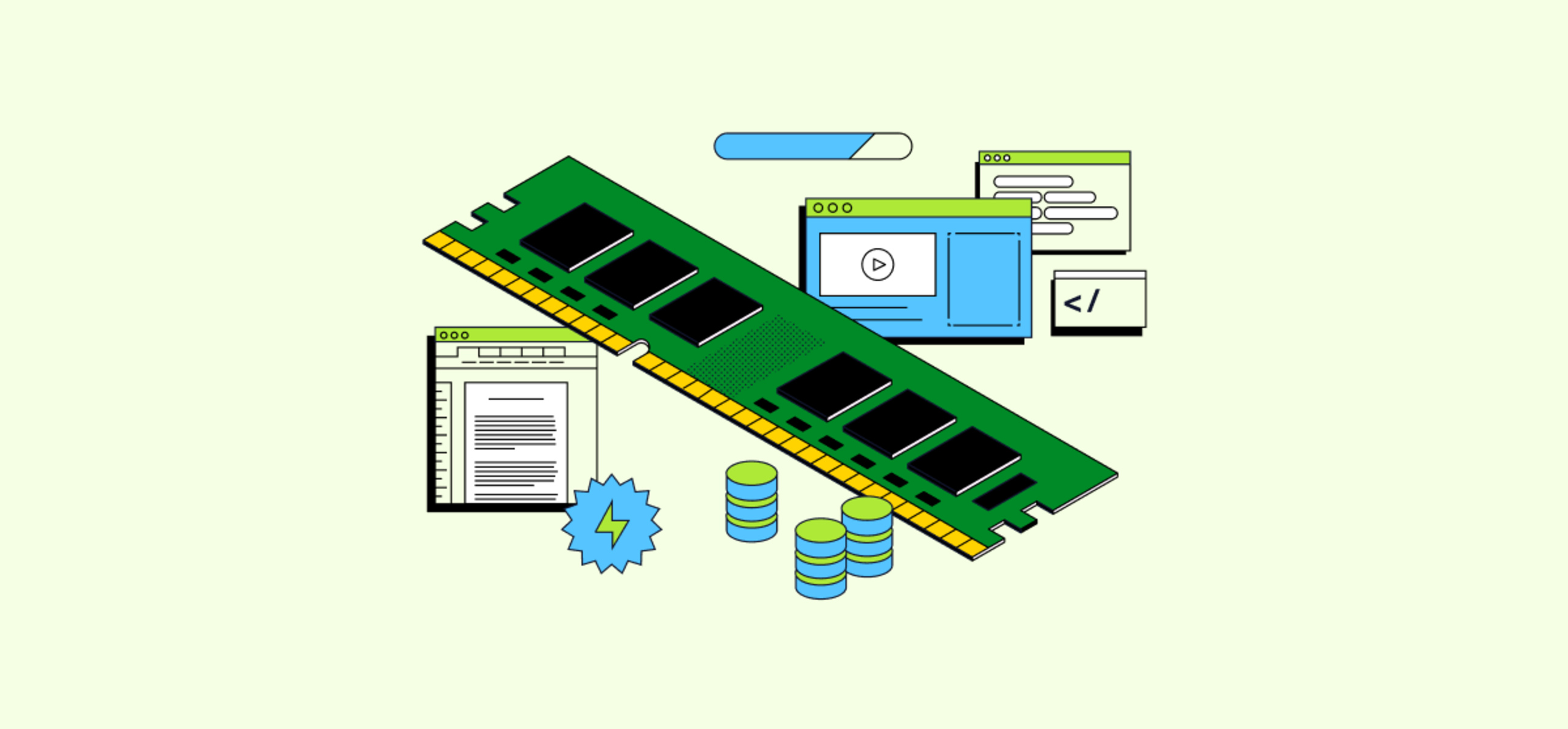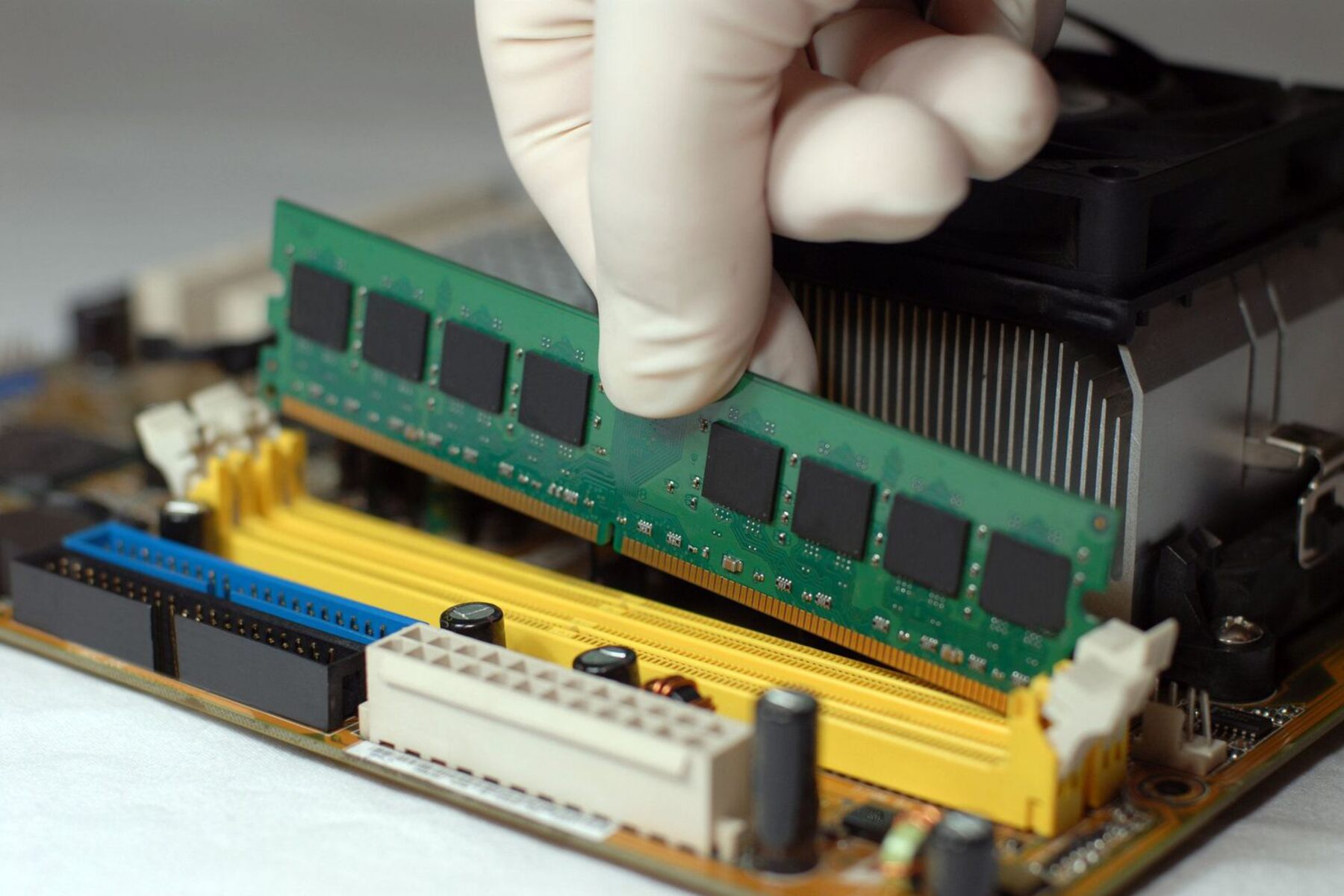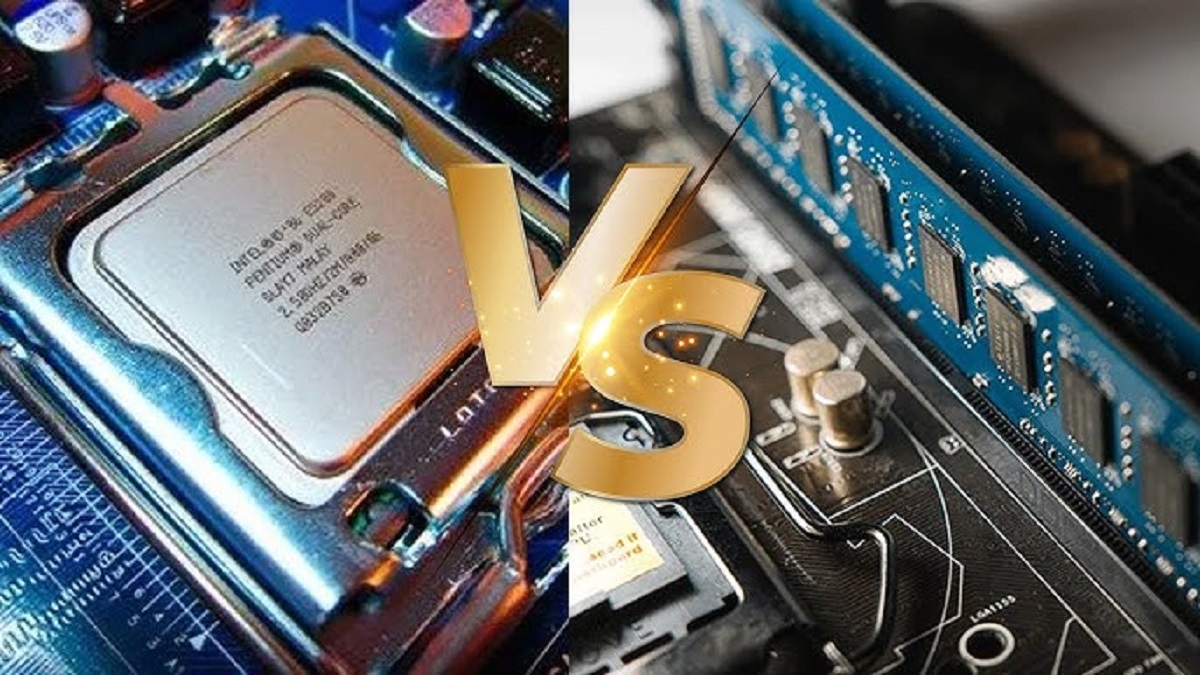Introduction
When it comes to computer performance, two main components play a crucial role: RAM (Random Access Memory) and the processor. These components work together to determine how fast a computer can execute tasks and handle multiple applications simultaneously. Understanding the impact of RAM and the processor on a computer’s speed can help you make informed decisions when upgrading or purchasing a new system.
RAM serves as the short-term memory of a computer, allowing it to store and access data quickly. Meanwhile, the processor, also known as the central processing unit (CPU), is responsible for executing instructions and performing calculations. Together, they form the backbone of a computer’s performance.
Knowing whether RAM or the processor is the primary factor in determining speed is important, as it can influence the tasks your computer can handle efficiently. In this article, we will delve into the role of RAM and the processor, the ways in which they affect a computer’s speed, and provide tips for optimizing their performance.
Whether you’re a casual user, a gamer, a designer, or a professional, understanding the importance of RAM and the processor will empower you to make informed decisions when choosing or upgrading your computer’s hardware. So, let’s dive in and explore the factors that contribute to a computer’s speed and performance.
What is RAM?
RAM, or Random Access Memory, is a type of computer memory that stores data that is being actively used by the computer. It is a temporary storage space where the computer can quickly read and write data. Unlike permanent storage devices such as hard drives or SSDs, RAM provides much faster access to data, allowing the computer to retrieve and process information more rapidly.
RAM works on the principle of random access, meaning that any data stored in it can be accessed directly, regardless of its location. This is in contrast to sequential access memory, where data is accessed in a specific order. The random access capability of RAM allows for faster retrieval of information, as the computer doesn’t need to search or wait for data to be accessed.
One of the key features of RAM is its volatility. This means that the data stored in RAM is only retained as long as the computer is powered on. When you turn off your computer, the data stored in RAM is cleared, making it a temporary storage solution.
RAM comes in different capacities, commonly measured in gigabytes (GB) or terabytes (TB). The more RAM your computer has, the more data it can hold in its temporary storage, allowing it to efficiently handle multiple tasks simultaneously. Having sufficient RAM is particularly important when running resource-intensive applications or when multitasking with several programs open at once.
When considering the amount of RAM you need, it’s important to take into account your individual usage requirements. If you primarily use your computer for basic tasks like web browsing and document editing, 4 to 8 GB of RAM should suffice. However, for more demanding tasks such as gaming, video editing, or running virtual machines, you may need 16 GB or more to ensure smooth performance and avoid slowdowns.
Now that we have a better understanding of what RAM is and its role in a computer, let’s explore how it affects a computer’s speed and performance.
How Does RAM Affect a Computer’s Speed?
RAM plays a crucial role in determining a computer’s speed and overall performance. It affects a computer’s speed in several ways:
- Running Applications: When you open an application on your computer, it gets loaded into RAM. The more RAM you have, the more applications you can run simultaneously without experiencing slowdowns. With ample RAM, your computer can keep multiple programs in its memory, allowing for quick access and smooth multitasking.
- Opening Files and Documents: When you open a file or document, it is temporarily loaded into the RAM to allow for faster access. Having sufficient RAM reduces the time it takes to open files, improving overall system responsiveness.
- Browsing the Web: Web browsers use RAM to store temporary data, such as website content and cached files. With more RAM, your browser can store a larger amount of data, leading to faster browsing speeds and smoother navigation.
- Gaming Performance: RAM is essential for gaming, as games often require a significant amount of memory to load assets, textures, and other game-related data. Insufficient RAM can lead to lag, stuttering, and longer loading times in games. Having ample RAM ensures a smooth gaming experience by providing enough memory for the game to run optimally.
- Operating System Optimization: The operating system uses RAM to store data and perform various background tasks. With more RAM, the operating system can keep a larger number of system files and processes in memory, resulting in faster system operations and improved responsiveness.
It’s important to note that while RAM affects a computer’s speed, it is not the sole determinant. Other factors, such as the processor, storage drive, and graphics card, also contribute to overall performance. However, having sufficient RAM is crucial for ensuring that your computer can handle the demands of modern software and applications.
In the next section, we will discuss how to determine the amount of RAM you need for your specific usage requirements.
How to Determine the Amount of RAM You Need
Determining the amount of RAM you need for your computer depends on various factors, such as your intended usage, the applications you run, and your budget. Here are some guidelines to help determine the appropriate amount of RAM:
- Consider Your Usage: Assess how you typically use your computer. Are you mainly browsing the web, using office applications, and streaming videos? In this case, 4 to 8 GB of RAM should be sufficient. If you frequently work with resource-intensive applications like video editing software, CAD programs, or virtual machines, you may need 16 GB or more to ensure smooth performance.
- Check System Requirements: If you have specific software or games in mind, check their recommended system requirements. Developers often specify the minimum and recommended RAM for optimal performance. Aim to meet or exceed the recommended requirements to ensure a smooth experience.
- Consider Future Proofing: If you’re planning to keep your computer for several years, it’s wise to future-proof your system by opting for more RAM than you currently need. Technology is continually advancing, and software requirements tend to increase over time. Having ample RAM will allow your system to handle future updates and applications without performance issues.
- Budget Considerations: RAM prices can vary, so it’s essential to consider your budget when determining how much to allocate. Balancing your needs and budget is crucial. Investing in more RAM than you currently require might be worthwhile if it improves your computer’s longevity and performance.
Remember that adding more RAM to your system is typically a straightforward process, provided your computer’s architecture allows for it. Most desktop computers can have additional RAM modules installed, while some laptops may have limited upgradability. If your system has reached its maximum RAM capacity, consider other optimization techniques, such as closing unnecessary applications, clearing temporary files, or upgrading other hardware components.
Ultimately, the amount of RAM you need is highly dependent on your specific computing needs. By considering your usage patterns and future requirements, you can make an informed decision about the appropriate amount of RAM to include in your system.
Tips for Increasing RAM Performance
If you’re looking to optimize the performance of your computer’s RAM, here are some tips to consider:
- Close Unnecessary Applications: Running too many applications simultaneously can use up a significant amount of RAM. Close any programs or processes that are not actively in use to free up memory for other tasks.
- Manage Startup Programs: Configure your computer to launch only essential programs at startup. Many applications have options to disable automatic startup, which can help reduce the amount of RAM being used when your computer boots up.
- Remove Unwanted Files and Software: Regularly clean up your system by deleting unnecessary files and uninstalling unused software. This can free up valuable storage space and reduce the strain on your RAM.
- Optimize Virtual Memory: Virtual memory is a system feature that uses part of your hard drive space as additional memory. Adjusting the virtual memory settings can help improve RAM performance. Increase the size of the paging file or enable automatic management to allow your system to allocate virtual memory more efficiently.
- Upgrade to Faster RAM: If your motherboard supports it, consider upgrading to faster RAM modules. This can increase data transfer speeds and improve overall system performance.
- Ensure Proper Ventilation: Overheating can affect the performance of your RAM. Ensure that your computer is properly ventilated and free from dust build-up to prevent overheating issues that could impact RAM performance.
- Update Your Operating System and Drivers: Keeping your operating system and device drivers up to date can help optimize RAM usage. Installing the latest updates and patches can improve system stability and performance.
By implementing these tips, you can enhance the performance of your computer’s RAM, allowing for smoother multitasking and improved overall system responsiveness.
What is a Processor?
A processor, also known as a central processing unit (CPU), is a vital component of a computer that executes instructions and performs calculations. It acts as the brain of the computer, managing and coordinating all the tasks and operations.
The processor consists of one or multiple cores, each capable of executing commands at high speeds. The number of cores can vary, with modern processors typically ranging from dual-core to octa-core or even higher. More cores allow for parallel processing, enabling the computer to handle multiple tasks simultaneously.
The performance of a processor is measured by several factors, including clock speed, cache size, and architecture. Clock speed, measured in gigahertz (GHz), determines how many instructions a processor can execute per second. A higher clock speed translates to faster processing and improved performance.
The cache is a small, high-speed memory that stores frequently accessed data for quick retrieval by the processor. A larger cache can help reduce memory latency and improve overall performance. The architecture of a processor refers to its design and organization, including features such as instruction sets, pipelines, and microarchitecture.
Processors are built using microprocessing technology, with different generations and models offering varying levels of performance. Each new generation generally brings improvements in efficiency, power consumption, and processing power, allowing for faster and more efficient computing.
Processors play a critical role in a computer’s speed and performance, affecting tasks such as booting up the system, loading applications, multitasking, and running resource-intensive software. They work in conjunction with other hardware components, including RAM, storage drives, and graphics cards, to deliver a seamless user experience.
There are various brands and models of processors available on the market, including Intel and AMD, both of which offer a range of options catering to different budgets and computing needs. When choosing a processor, it’s essential to consider factors such as your usage requirements, compatibility with your motherboard, and budget.
Now that we have an understanding of what a processor is and its significance, let’s explore how the processor affects a computer’s speed and performance.
How Does a Processor Affect a Computer’s Speed?
A processor, also known as a central processing unit (CPU), plays a crucial role in determining a computer’s speed and overall performance. Here are some ways in which the processor affects a computer’s speed:
- Execution of Instructions: The processor is responsible for executing instructions and performing calculations. A faster processor can process instructions more quickly, leading to faster program execution and improved overall system responsiveness.
- Single-Threaded Performance: Some tasks, such as web browsing or document editing, rely heavily on the performance of a single core of the processor. A processor with higher clock speeds and better single-threaded performance can handle these tasks more efficiently, resulting in faster response times and smoother user experience.
- Multi-Threaded Performance: Most modern processors have multiple cores, allowing for parallel processing of tasks. Tasks that can be divided into multiple threads, such as video editing or 3D rendering, can benefit significantly from a processor with more cores. Each core can work on a different thread simultaneously, resulting in faster completion times for these types of tasks.
- Cache Size and Latency: Processors have a small, high-speed memory called the cache, which stores frequently accessed instructions and data. A larger cache can reduce memory latency, allowing the processor to access data quickly. This can lead to faster execution times and improved overall performance.
- Instruction Sets and Architectural Features: Different processors come with various instruction sets and architectural features that can impact performance. Advanced features such as branch prediction, out-of-order execution, and vector processing can improve the processor’s efficiency and speed in executing tasks.
- Power Efficiency: A processor’s power efficiency can affect both performance and energy consumption. More power-efficient processors can deliver satisfactory performance while consuming less power, resulting in longer battery life for laptops and reduced electricity costs for desktop systems.
When choosing a processor, it’s essential to consider your specific computing needs and budget. For tasks that require high single-threaded performance, such as gaming or everyday tasks, a processor with a higher clock speed and strong single-core performance might be the better choice. On the other hand, multi-threaded workloads like video editing or 3D rendering can benefit from processors with more cores.
It’s also important to note that the processor is just one component that contributes to a computer’s overall speed and performance. Other factors, such as the amount of RAM, the speed of the storage drive, and the graphics card, also play important roles in determining a computer’s capabilities.
In the next section, we will discuss some tips for choosing the right processor for your specific computing needs.
How to Choose the Right Processor for Your Needs
Choosing the right processor for your computer is essential to ensure optimal performance for your specific needs. Here are some tips to help you make an informed decision:
- Consider Your Usage: Evaluate how you use your computer. Are you primarily using it for basic tasks like web browsing, email, and word processing? In this case, a mid-range processor with sufficient clock speed and dual or quad cores should be adequate. If you engage in demanding tasks such as video editing, 3D rendering, gaming, or running virtual machines, you may need a more powerful processor with higher clock speeds and multiple cores.
- Check Processor Benchmarks: Look for processor benchmarks and reviews online. Websites like PassMark and Geekbench provide detailed performance rankings and comparisons for different processors. These benchmarks can help you understand how a processor performs in real-world scenarios and guide you towards making an informed decision.
- Consider Future-Proofing: Think about how long you plan to keep your computer and whether you anticipate your computing needs to change in the future. Investing in a more powerful processor now can help ensure that your system can handle future software updates and more demanding applications without the need for an immediate upgrade.
- Assess Budget Constraints: Processors come in a wide range of prices, so it’s important to consider your budget. Determine a price range that aligns with your needs and find the best processor available within that range. Keep in mind that price and performance are not always directly proportional, so prioritize your requirements to find a balance that suits your budget.
- Consider Compatibility: Ensure that the processor you choose is compatible with your motherboard. Check the socket type and chipset specifications of your motherboard to find processors that are supported. If you’re building a new computer, ensure that the motherboard you choose supports the processor you have in mind.
- Research Brand and Model: Different brands, such as Intel and AMD, offer a variety of processors with varying performance and capabilities. Research the specific models within these brands to find the one that best fits your requirements. Look for customer reviews and feedback to get an idea of the reliability and performance of a particular processor model.
By considering your usage requirements, conducting thorough research, and assessing your budget, you can make an informed decision when choosing the right processor for your computer. Keep in mind that the processor is just one component, and it should be considered alongside other hardware components, such as RAM, storage drives, and graphics cards, to ensure overall system compatibility and performance.
Tips for Maximizing Processor Performance
If you want to maximize the performance of your computer’s processor, consider implementing the following tips:
- Ensure Proper Cooling: Keep your computer’s cooling system in good working condition. Dust and debris can accumulate on cooling fans and heatsinks, leading to overheating and performance throttling. Regularly clean the cooling components to maintain optimal operating temperatures.
- Enable Performance Mode: Adjust the power settings of your computer to enable high-performance mode. This ensures that your processor operates at its maximum clock speed, delivering optimal performance when needed. Keep in mind that running the processor at higher speeds may increase power consumption and generate more heat.
- Update System BIOS: Periodically check for system BIOS updates from your motherboard manufacturer. These updates can provide performance optimizations and bug fixes that can enhance processor performance and compatibility.
- Manage Background Processes: Close unnecessary background processes and applications that may be using CPU resources. Tools like Task Manager (Windows) or Activity Monitor (Mac) can help you identify resource-hogging applications and terminate them to free up CPU cycles.
- Optimize Software Settings: Configure resource-intensive applications to make the best use of the processor. Some programs allow you to allocate more CPU resources or adjust CPU usage priorities. Explore the settings of your applications to optimize performance according to your needs.
- Upgrade to an SSD: Consider upgrading your storage drive to a solid-state drive (SSD). Compared to traditional hard disk drives (HDDs), SSDs offer faster data access speeds, reducing the time it takes for the processor to retrieve and write data. This can significantly improve overall system responsiveness.
- Keep Software Updated: Ensure that your operating system and software are up to date with the latest patches and updates. Developers often release performance optimizations and bug fixes that can enhance processor performance and overall system stability.
- Monitor Temperatures: Regularly monitor the temperatures of your processor using software monitoring tools. Excessive heat can cause performance throttling and system instability. If temperatures are consistently high, consider upgrading your cooling system or adjusting the fan speeds to maintain optimal operating temperatures.
By implementing these tips, you can maximize the performance of your computer’s processor, ensuring that it operates at its full potential and delivers optimal speed and responsiveness.
RAM vs Processor: Which is More Important for Speed?
When it comes to determining the speed and performance of a computer, both RAM (Random Access Memory) and the processor (CPU) play important roles. However, if we were to compare their significance in terms of speed, it is essential to understand their individual contributions:
RAM: RAM is responsible for storing and quickly accessing data that the computer is actively using. It affects speed by allowing the computer to efficiently run multiple applications simultaneously. Having ample RAM allows the computer to keep more data in its temporary storage, reducing the need to swap information with the slower storage drives. This helps facilitate faster access to data and smoother multitasking.
Processor: The processor is responsible for executing instructions and performing calculations. It affects speed by determining how quickly a computer can process and execute tasks. A faster and more powerful processor can handle complex calculations and instructions with greater efficiency, resulting in faster program execution and better overall system performance.
While both RAM and the processor contribute to a computer’s speed, their roles are different. RAM primarily affects how many programs and tasks your computer can handle simultaneously, while the processor focuses on the speed at which tasks are executed and processed. It’s important to note that the performance of one component can be limited by the other. For example, having a fast processor but insufficient RAM can cause the computer to slow down when running multiple programs simultaneously.
Choosing between RAM and the processor in terms of importance for speed depends on your usage requirements. If you often work with resource-intensive applications or run several programs simultaneously, having sufficient RAM is crucial. It allows your computer to store and access the necessary data quickly, reducing lag and improving performance.
However, if you engage in tasks that require intensive calculations or rely on single-threaded performance, a more powerful processor may be more important. This is particularly relevant for tasks such as gaming, video editing, 3D rendering, or running complex software and simulations.
In reality, optimal performance is achieved by having a well-balanced system with sufficient RAM and a capable processor. Investing in both RAM and a processor that meets your specific needs will result in a faster and smoother overall computing experience.
It’s important to consider all aspects of your computer’s hardware, including RAM, the processor, storage drives, and graphics cards, to ensure a well-rounded system that can meet your speed and performance requirements.
Conclusion
When it comes to determining the speed and performance of a computer, both RAM and the processor play critical roles. RAM affects speed by enabling efficient multitasking and quick access to data, while the processor determines how quickly tasks are executed and processed. These components work together to deliver optimal performance.
Choosing between RAM and the processor in terms of importance for speed depends on your specific usage requirements. If you frequently run multiple applications simultaneously or work with resource-intensive tasks, having sufficient RAM is crucial. It allows your computer to store and access data quickly, ensuring smooth and efficient performance.
On the other hand, a powerful processor is more important for tasks that heavily rely on calculations and single-threaded performance, such as gaming, video editing, and complex simulations. A faster and more capable processor can handle these tasks with greater efficiency, resulting in improved speed and responsiveness.
Ultimately, optimal speed and performance are achieved when both RAM and the processor are well-matched and complement each other. It’s important to consider other factors as well, such as storage drives, graphics cards, and system optimization, to create a balanced and high-performing computer system.
By understanding the roles of RAM and the processor and considering your specific usage requirements, you can make informed decisions when upgrading or purchasing a new computer. Balancing the capabilities of both components will ensure that your system can handle your tasks efficiently and provide a seamless computing experience.
Remember to keep your computer’s hardware and software up to date, manage background processes, optimize settings, and ensure proper cooling to maximize the performance of both RAM and the processor.
Ultimately, a well-rounded and optimized computer system will deliver the speed and performance you need to accomplish your tasks efficiently and enjoy a seamless computing experience.







